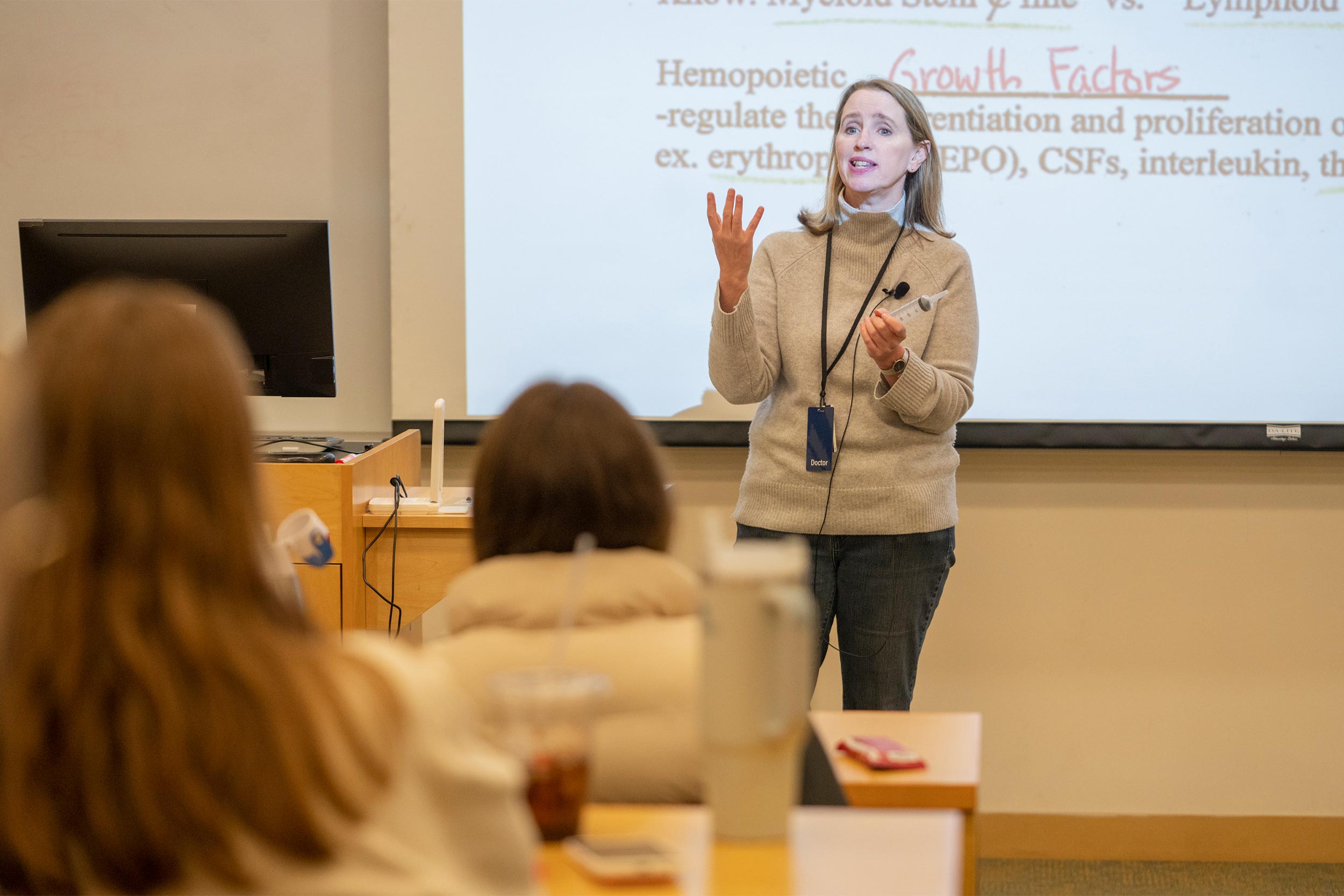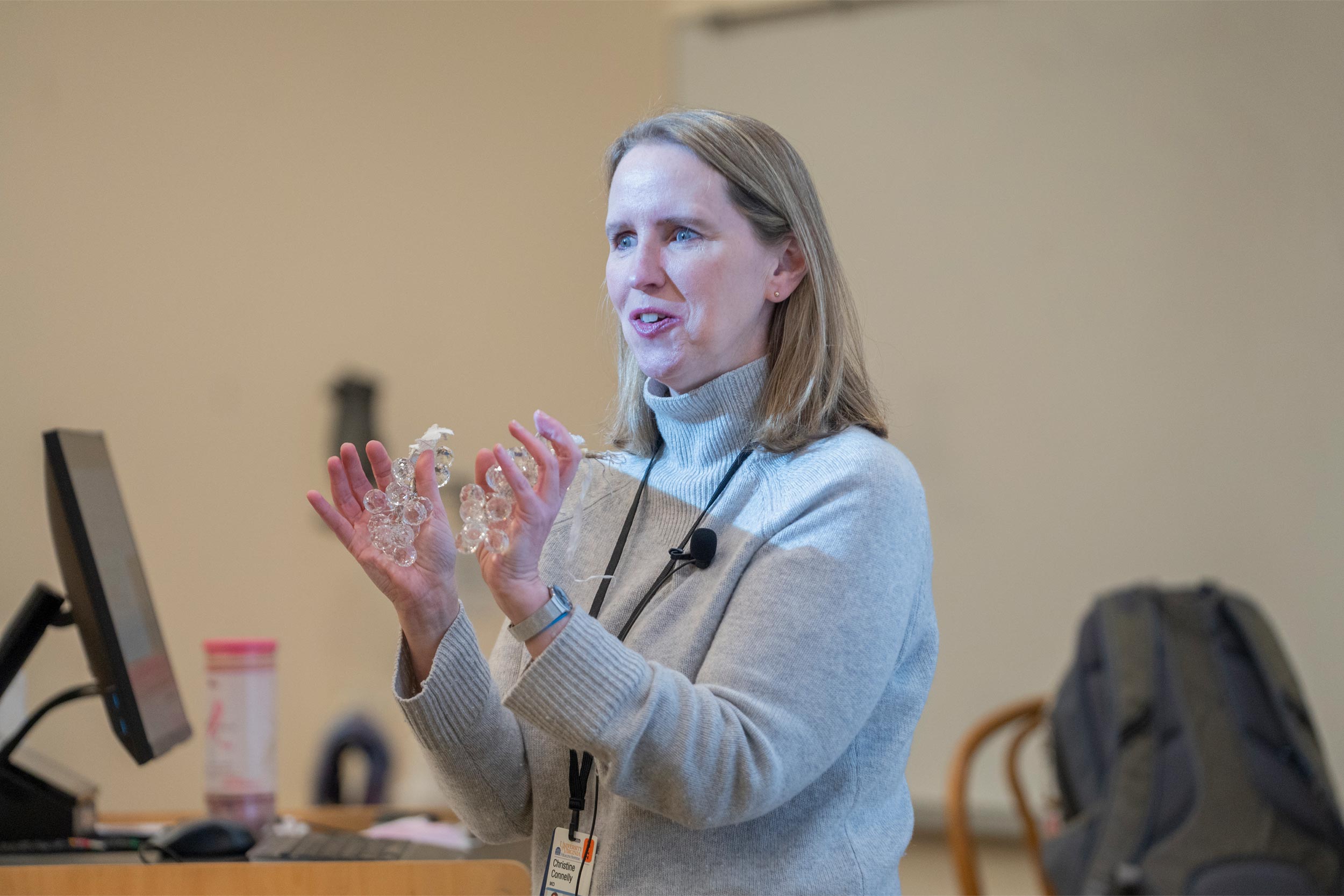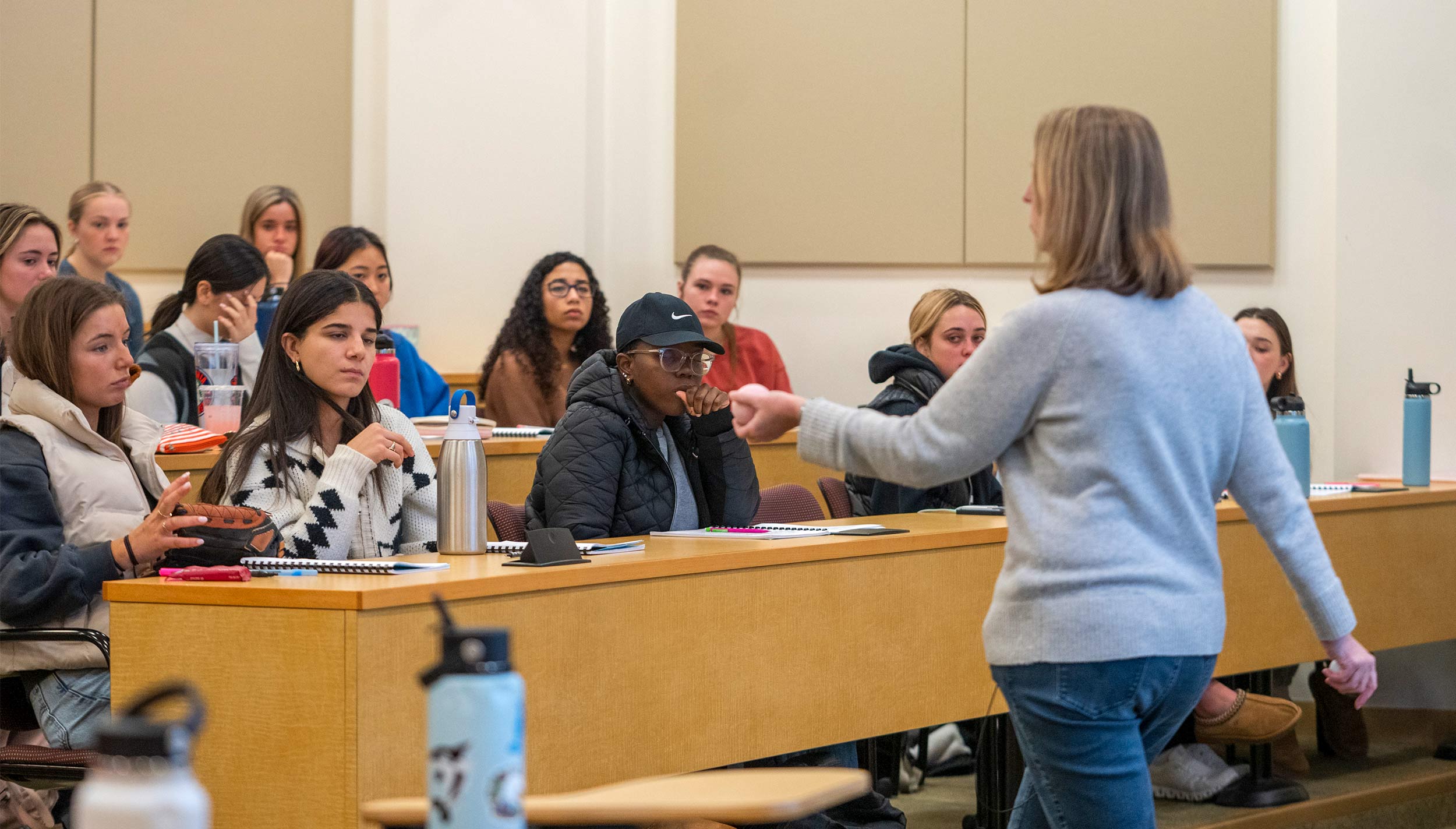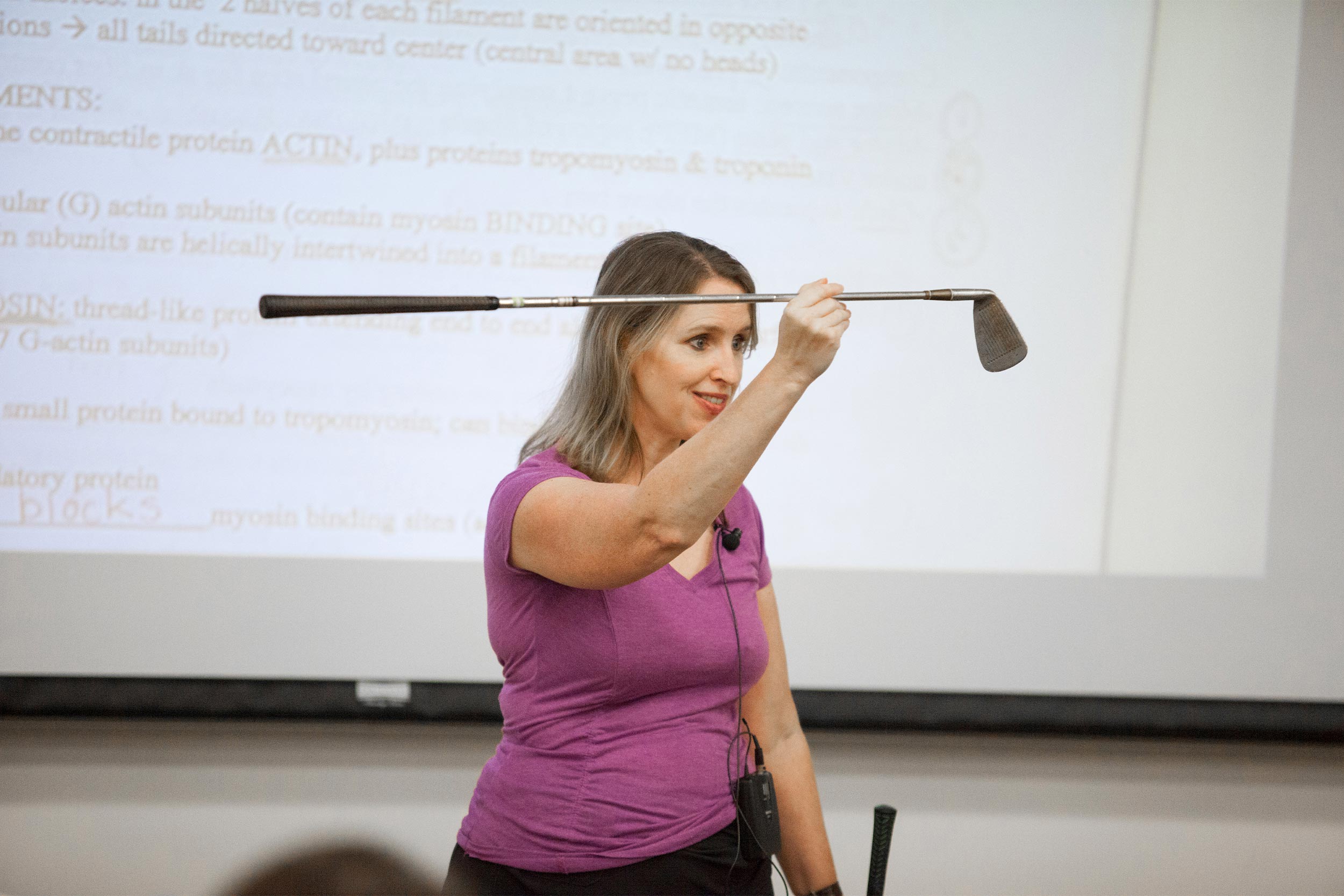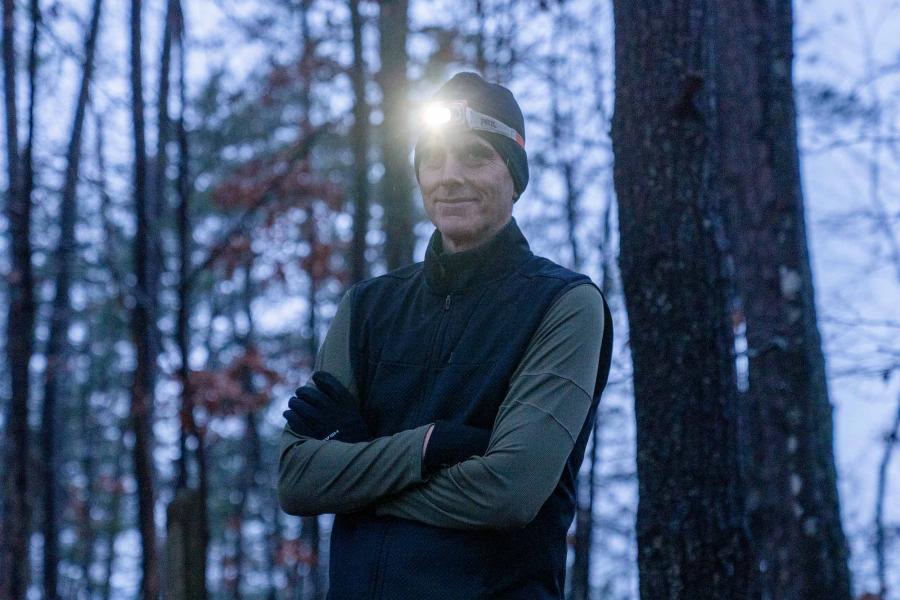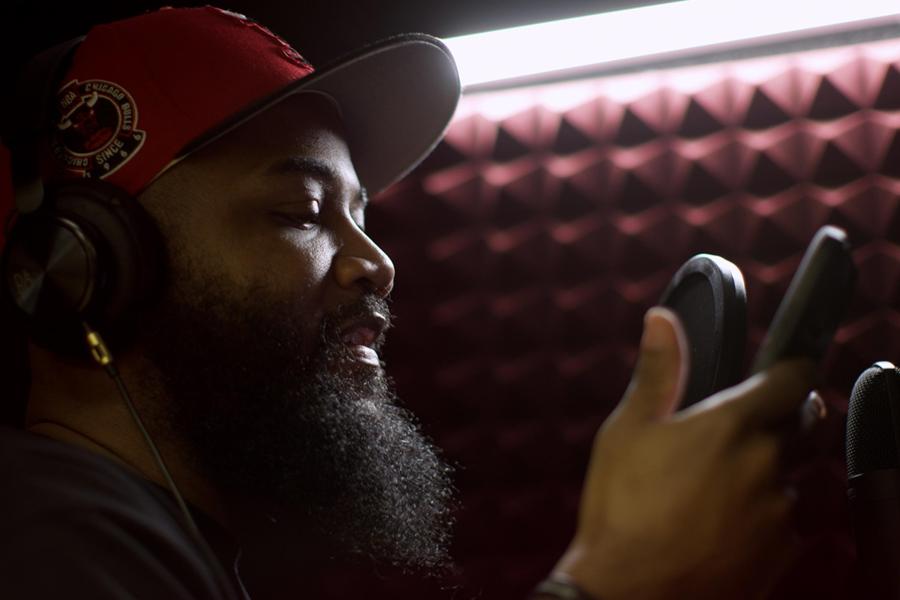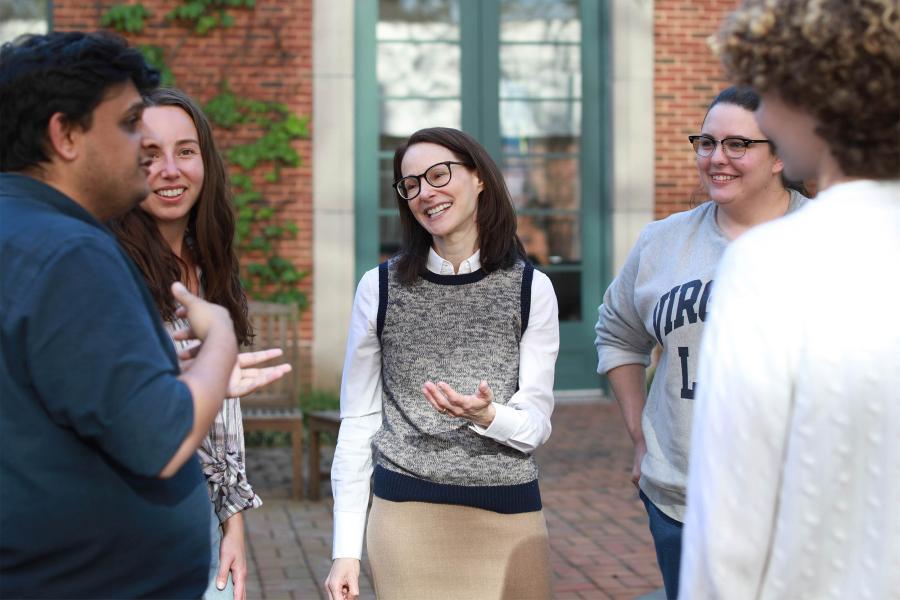Dr. Christine Connelly, an assistant professor at the University of Virginia who teaches in the School of Nursing, uses her son’s sports equipment, a bathing suit and artificial fruit to help her students remember scientific details, processes and all kinds of cells.
Her use of props is natural. She remembers riding in an elevator in medical school, looking at the ceiling pattern and thinking “liver tissue.”
“Liver tissue under the microscope is kind of organized in these little hexagons. And I’m thinking, ‘Oh, my gosh, what’s going on here? People just look at the ceiling, and I’m seeing a liver.’ I don’t know if that was funny or sad!” she said.
All first-year nursing students – 70 to 75, depending on the class – take her yearlong anatomy and physiology course. Connelly also teaches a smaller group microbiology each semester; that course additionally admits undergraduates from the College of Arts & Sciences who are interested in health-related fields.
In her anatomy and physiology course, Connelly has shown a golf club to represent myosin, a protein in muscles that looks like it has a head and a tail. The long handle of the golf club looks like the tail, and “when that head, the golf club head, interacts with actin, another protein that looks like the golf ball, you have a contraction, and that’s when your muscle shortens.
“So, when [students are] hearing all these new words, at least when they go back and study, they can say, ‘Oh yeah, the myosin was the golf club and actin was the golf ball,’ and I think that makes it less intimidating,” she said.
Her students appreciate Connelly and her approach.
“I like her attitude,” Kaylee Lamonica, a student from Virginia Beach, said after a recent class. “She’s always excited to teach.” Lamonica added that Connelly’s stories and props help students learn the scientific concepts.
Fourth-year student Noura Abousy, who’s majoring in global public health and took Connelly’s microbiology course last semester, said she would recommend Connelly’s courses to anyone, just for the chance to get to know her.
“She woke you up and made you want to learn,” said Abousy, who also turned to Connelly for advice about applying to dental schools. “Microbiology is a hard topic to digest. She made you want to be engaged with the material. You got to know who she was because she would use examples from her own life. You learned about her and about the topic.”
